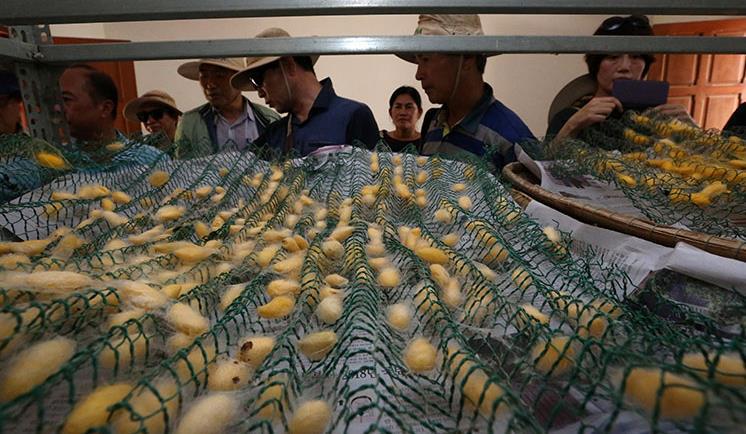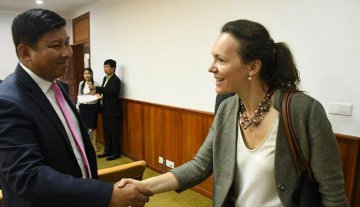
With the aim of boosting the local sericulture sector, the Royal Academy of Cambodia (RAC) and the South China Agricultural University (SCAU) will soon begin a collaboration to conduct research in the industry and train farmers.
The Cambodian institution will be working with SCAU’s Regional Sericulture Training Centre for Asia-Pacific (RSTCAP), Sok Touch, RAC’s president, announced yesterday.
The first goal of the collaboration will be to draft a document with comprehensive information on the local sericulture industry.
“Our goal is to use technology and science to improve traditional methods to produce silk,” he said.
“We will compile a document that contains all relevant information regarding silkworms, mulberry trees, diseases, types of soil, reeling, etcetera,” Mr Touch said.
He was speaking yesterday at RAC as part of a presentation by Professor Ji Ping Liu, director of RSTCAP, on poverty reduction through silkworm farming.
“We will combine theory and practice in one document that will be used by government officials and farmers,” Mr Touch said.
About 1,000 hectares of land in Preah Vihear’s Techo Sen Russey Trep Park will be reserved for RSTCAP-SCAU to conduct research as well as workshops for farmers.
“We will also provide training and technical support to farmers, and we will help them find markets for their products,” he said.
Mr Touch added that this was the first official collaboration between his centre and the Chinese institution, and explained that the partnership aims to establish RAC as a leader in sericulture study and research in the Kingdom.
RSTCAP’s Mr Ji said the silk industry plays an active part in the development of the Cambodian economy.
“Raw silk has high economic value, and means additional income for many poor rural communities,” he said.
He added that it promotes the overall development of agriculture, as well as that of local light industries, and helps expand trade.
“Cambodia is a very traditional country, with plenty of land and a big workforce. The first step is to educate and train that workforce,” Mr Ji said.
“Under this cooperation, we will provide that training, as well as build demonstration farms, supply silkworms and mulberry trees, and support other aspects of the process,” he said.
According to Mr Ji, the production of raw materials and semi-finished products in the silk industry now concentrates in Southeast Asia, Southern China, Africa and Latin America.
High-quality silk products are consumed mostly in Western Europe, US and Japan, while low and medium-quality ones are sent to Asia and the Middle East, he said.





















Latest comments